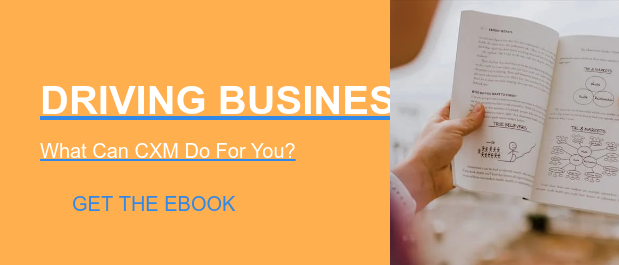Creating a better customer experience is great for business, so it’s no wonder that so many brands have made customer experience management (CXM) a top priority. After all, what’s good for the customer is always good for the business too.
While CXM programs can deliver immediate results, many organizations hit a wall and begin to see flattening returns. This “plateau” where return on investment slows, can make it a lot more difficult to justify increasing or even maintaining CX budgets, and in some cases, leadership might abandon the project altogether.
Fortunately, overcoming the CXM plateau isn’t as daunting as it seems. A shift in your approach is all you need to push past those growing pains and reach CXM maturity.
Why is it so hard to go from good to great CXM?
There are several stages to reaching customer experience maturity, starting on one end with a loosely defined CXM program collecting scattered feedback. Brands that excel at customer experience, meanwhile, typically oversee a formal, well-defined program that gathers both direct and indirect customer feedback, synthesizes that information to fully understand the customer journey, and even predicts changes in customer sentiment.
Going from one end of that maturity model to the other takes a concerted organizational effort. Brands also need the right tools to support CXM and execute their programs. Along the way, CX leaders will likely find that the degree of difficulty required to take the next step can vary significantly. Companies in the earlier stages of their CX journey will see bigger results by simply creating a more formal framework to manage their CXM program.
On the other hand, the kinds of improvements needed to raise a good CXM program to a great one are more nuanced and complex, including:
- Combining data and feedback from direct and indirect sources.
- Capturing customer insights in real time.
- Monitoring every possible touchpoint across digital and physical channels.
- Tailoring the customer experience to individual preferences.
- Assessing the program’s performance on a routine basis.
- Incorporating artificial intelligence to identify and anticipate customer needs and market trends.
These are sophisticated requirements, so it’s not entirely surprising that some CXM programs stall after they have plucked clean all the low-hanging fruit. The right technology and tools have a major impact on customer experience, what really separates CXM leaders from the rest of the pack is the way in which they make customer experience a brand differentiator.
Set your brand apart with a better customer experience
Companies that excel in this area go beyond carving out budget for a CXM program — they make customer experience a core component of their brand identities. Providing an excellent customer experience is part of who they are on a fundamental level.
When looking at all the available data and industry reports correlating strong customer experiences with higher revenue opportunities, why wouldn’t companies prioritize CXM as a key differentiator? According to PwC, 73% of consumers consider the brand experience when making any purchasing decision, with many stating they would pay up to 16% more for products and services that are backed by a great experience.
The converse is true too: Nearly one-third (32%) of consumers would drop a brand they love after a single bad experience. It only takes one misstep to undo all the hard work spent establishing a strong rapport with a customer and building brand loyalty.
By re-prioritizing customer experience, and staking brand identity on giving customers what they want, when they want it, organizations can gain the support needed to continually improve their CXM program regardless of any obstacles that get in the way. The CXM plateau will no longer be a discouraging roadblock that derails the entire program — instead, it’ll be just another surmountable hurdle on the journey to CXM maturity.
Target the 4 pillars of CXM value
CXM drives business value across four categories, and understanding those value pillars can help brands identify gaps in their CXM strategy. When it’s firing on all cylinders, a CXM program should be helping you:
- Improve your customer experience.
- Increase your revenue.
- De-risk your decision-making.
- Accelerate innovation.
If a CXM program isn’t producing tangible results along each of those areas, then something is off with either the strategy or the execution. One important point to keep in mind is that each value pillar feeds into one another — for instance, improving the customer experience will lead to more satisfied customers who spend more money and stick with your brand longer, leading to higher revenue. A holistic approach that targets each pillar individually without losing sight of the broader business goals will help put CXM strategies on the right track.
To that end, here are three easy wins for improving the immediate value of a CXM program:
- Close the loop on every piece of feedback and input you receive.
- Monitor KPIs like Net Promoter Score®, customer satisfaction, customer effort score, churn rates, and retention rates to understand how customers view your brand.
- Prioritize positive experiences for every customer interaction.
The final piece of the puzzle is technology. The right CXM solution will make it easier to collect different types of feedback from a wide variety of sources and empower teams across the entire organization to uncover valuable insights that help to continually improve the customer experience. The Alida CXM and insights platform has everything you need to get over the CXM plateau, reach a new level of CXM maturity, and, most importantly, deliver the best customer experience possible.








